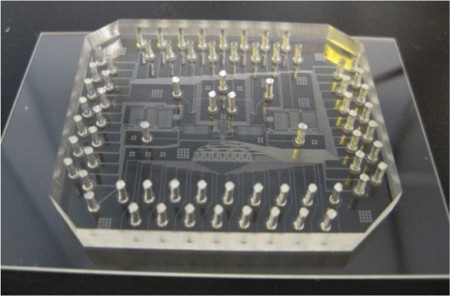A scientist team from various departments of the Vanderbilt University have come up with a theory of a computer being able to analyse and work on raw biological data and build basic mathematic equations which will describe the working of the biological system. The team claims that the computer was successful in solving a very complex scientific model from the start.
 One of the microformulators that the Wikswo lab has developed that will give ABE the ability to perform experiments without human intervention. (Courtesy of Wikswo Lab)
One of the microformulators that the Wikswo lab has developed that will give ABE the ability to perform experiments without human intervention. (Courtesy of Wikswo Lab)
The research findings were published in this month’s edition of Physical Biology. The team consisted of John P. Wikswo, a professor from the Gordon A. Cain University, Michael Schmidt and Hod Lipson from Cornell University and RavishankarVallabhojosyula and Jerry Jenkins from CFDRC in Huntsville.
The controlling center of the system has been named as Automated Biology Explorer (ABE) by Wikswo, which is run by a software called Eureqa. The software was developed at Cornell and released in the year 2009 and was originally developed for running robots. Eureqa first demonstrated its success by identifying the laws of motion by observing the movement of a pendulum. After the success of the software on robots, it was extended by the team to solve complex problems in science. Wikswo was convinced that the software developed by Hod and Lipson can be used to solve biological problems and also exercise control over them.
The research team first tested the ABE on a biological process called glycolysis, the process that is responsible for producing energy in a living being. In the process, the team focussed on glycolytic oscillations and tested the software on this by concentrating on the behaviour of yeast cells which are responsible for controlling the chemical processes. Jenkins and Vallabhajosyula then made use of the mathematical models created by the system to make a data set according to the measurements made by scientists under different conditions. The scientists provided a 10% random error for the measurements in order to make them close to reality. This data was then fed into the Eureqa, which evaluated it and formed a series of equations which were very similar to the already known equations. The team is directing their efforts towards making ABE run like Adam, a robot scientist developed at the University of Wales, by developing a ‘lab-on-chip’ that can be controlled by Eureqa. They will be concentrating on microfluidic devices for achieving this.